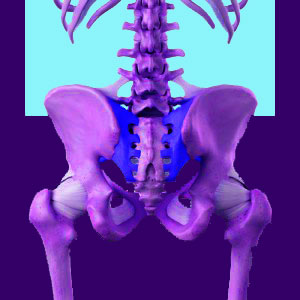
Atypical formation of the lumbar spinal anatomy takes the blame for the majority of chronic back pain complaints, since these abnormalities are most typically experienced in the lower back region. While it is completely normal to express a variety of degenerative structural changes in the lumbar spine, medicine still blames many of these abnormalities for causing chronic back pain symptoms, despite research evidence which clearly shows little, if any, correlation between the structural changes and the incidence of low back pain. That being said, the lower spinal anatomy is a complicated region, full of tissues that can become injured or degenerated to the point of eliciting pain. Since many of these changes are not pathological, it can become extremely confusing for patients to truly know if their suffering might be definitively related to an anatomical change or whether it may be coincidental.
This essay takes an in-depth look at the composition of the lower spinal anatomy, as well as how the tissues which reside therein might cause pain in a variety of forms.
General Lumbar Spinal Anatomy Details
The lumbar spine consists of 5 large vertebrae, with intervertebral discs providing the spacing between each bone.
The frontier where the thoracic spine meets the lumbar region is known as the thoracolumbar juncture and is the location implicated in the controversial diagnosis of posterior ramus syndrome.
The lumbosacral juncture is where the lumbar spine meets the sacrum and the spacer between L5 and S1 is called the lumbosacral disc.
The lumbar spine normally demonstrates a gentle lordotic curvature, which means that the open end of the curve faces towards the posterior of the body.
A perfect lumbar spine will not have any curvature from side to side, although slight degrees of curvature are still considered in the typical range for any adult human.
Neurological Lumbar Anatomy
Typically, the spinal cord ends in the upper lumbar spine, at L1 or L2, and branches off into what is known as the cauda equina. This structure is composed of the individual nerve roots, all bundled together in an anatomical shape resembling a horse’s tail; hence the name. These individual nerve roots will exit through each foraminal opening in the lumbar, sacral and coccygeal levels and will create a network of nerves that serve the entire lower body anatomy.
Being that spinal degeneration, including disc desiccation and osteoarthritis are basically universal in the lumbar spine, particularly at L4, L5 and S1, there is a high incidence of diagnosed spinal stenosis, lateral recess stenosis and foraminal stenosis in the low back anatomy. In some cases, these stenosis issues are indeed responsible for enacting pain and related neurological symptoms. However, in the majority of cases, these bodily irregularities are considered normal and may be coincidental to any pain which might exist. This fact is made quite clear when neurological correlation is performed, since the symptoms will not often directly correlate to the expected patterns, based clinical findings.
Skeletal Lumbar Spinal Anatomy
The lumbar vertebrae themselves are the thickest, largest and strongest of any in the spinal column. They must also endure the most degeneration, particularly in the spinal joints, where one level connects to the next.
Lumbar vertebrae are the most often affected by such structural abnormalities as sacralization, ligamentum flavum hypertrophy and Schmorl’s node formation.
Injury to the vertebral bodies of the lumbar vertebrae is uncommon, as these are very durable. However, injury to the spinal joints is more commonplace and might even lead to lumbar instability in the worst instances of trauma.
In the elderly, compression fractures are most often seen in the lower lumbar levels, as these bear more weight and stress than anywhere else in the vertebral column.
Lumbar Spine Summary
Sure, the average adult lumbar region is ravaged by the degenerative changes which are so often cited as the suspected sources of pain on MRI reports and other diagnostic tests. However, it is crucial to understand that the Cartesian medical model is antiquated and that most typical structural changes are not problematic or causative for pain. This explains why so many back pain treatment options that are directed at these very same anatomical issues fail to provide relief so often.
The more you learn about the lower back spinal anatomy, the better your chances of avoiding misdiagnosis of your pain and the greater your chances for finding permanent relief. Be sure to research your diagnosed condition exhaustively, in order to maximize the possibility to be free from chronic pain once and for all. Understanding the basics of the lumbar anatomy is a great place to begin.




